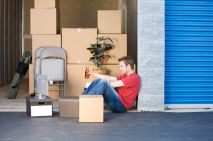Using the Right Packing for Your Home Move
Packing for a home move is one of the most important tasks you will perform. It is done so that you can keep all of your valuable belongings safe and easy to transport. You will not be able to manage without your essential items and you beloved treasures so you must put in all the work to guarantee that the security of your goods is assured. This is a tough process and can take a long time but with some guidance and information, it can be simple, so read on to find out more. The first step to take to conquer your packing chores is to write up a schedule. A plan with every task assigned a date and time will enable you to be adequately prepared for them, ensure you have enough time to get them completed and that nothing will be forgotten. You can also use this agenda to assign tasks to other members of your household so they know what they should be doing and when, as well as work out what you need and get it all in advance. Before you can begin pacing, you must sort all of your goods. Having items of similar size and shape together will help you arrange them later, so organise them this way. Items should be grouped collectively also by the room they are from, so that your boxes can be unpacked and all items placed in their new spots when you reach your new address. Keep fragile goods on their own and separate liquids, bulky items and sharp objects. Once you have all this sorted, you can finally get the right packaging for your move. There is a wide variety to choose from so you must ensure you get the right types. Tissue paper can be used for smaller items, while bubble wrap is ideal for larger and more delicate items. Polystyrene can be filled into a box and then items placed inside, with the material keeping it safe. You can buy these from stores and you should acquire them in bulk so you will have enough. Don’t forget that household items such as newspaper and old clothes and sheets can also be used. Utilise any if they are spare, as well as ask acquaintances whether they have any of these materials and you can use them. Boxes are easy to look for because you just need many plastic and cardboard containers in various sizes. Cardboard boxes are the easier to get a hold of and are cheaper. You may have old boxes from appliances you can use to save money and asking stores if they have any second-hand containers can be useful. Plastic boxes can be bought in many shops and will be useful. The advantages of cardboard are that it is cheap, recyclable, biodegradable and can be written on with marker. Plastic boxes are much stronger, come with lids and wheels, but they are more harmful to the environment and are more expensive to buy. Wrap all your goods gently with the appropriate material and use sealing tape to keep it on if necessary. Place them carefully into boxes, placing larger goods at the bottom and smaller goods on top. Never put too much in a container bascule it can become too heavy to carry, can cause it to fall apart and times may spill out. Seal the box when filled and label it so you know what is inside. These tips can make you packing much easier so follow them and buy what you need to keep your goods safe and easy to transport.










